In 2023, I’m making it a habit to visit countries that most people don’t visit. So, before I went off to Russia I spent a few days in Northern Iraq (Kurdistan) to see what’s going on there.
My first mistake was visiting in July. This might be the worst month to visit. The temperature was regularly 120 degrees Fahrenheit, though it’s definitely a dry heat unlike Dubai.
The first part of visiting Iraq is obtaining a visa. The country is essentially split in two, with two different governments in many ways. If you want to visit Erbil and Kurdistan, you need a visa from the Kurdistan Regional Government. If you want to visit Baghdad, or other areas of Iraq you’ll need a different visa.
I flew to Erbil via Dubai (not many airports fly to here) and stayed at the Erbil View Hotel. I booked a single room for $60 per night, but got a free upgrade to an entire suite.
I hired Haval as my guide for 2 days, for $200/day at the time. Haval is the best guide in all of Iraq, and I can’t recommend him highly enough. He plans everything, and drives you everywhere as well as handles any issues you may encounter at checkpoints. Especially if you plan on visiting Lalish, you really need Haval. His relationships with the Yazidee people are invaluable and help avoid some uncomfortable situations.
Day 2
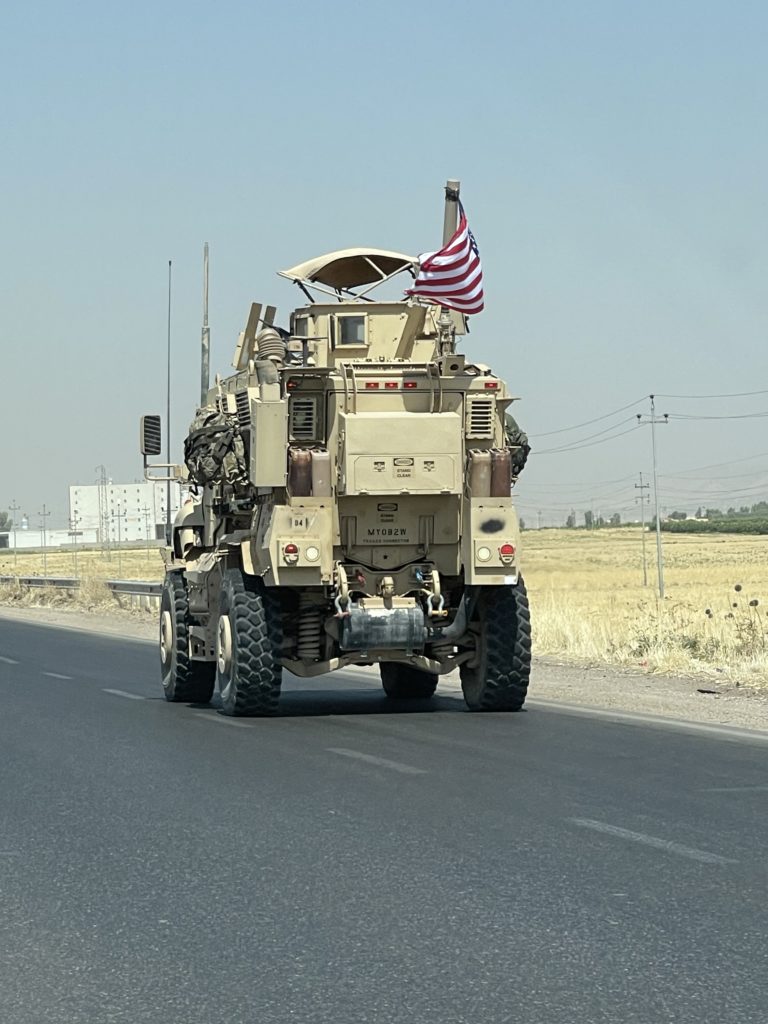
Saturday morning was when I first met with Haval. He picked me up from the hotel and we immediately started the drive to Lalish. During the drive was when I saw an American presence outside of the airport for the first time. On their way to what seemed to be Syria, a large American convoy was bringing weapons and vehicles.
Haval said this was quite unusual, but soon we turned down the road to Lalish and lost sight of the convoy.
Pulling into Lalish, the first thing you must do is remove your shoes. The entire village is considered holy, so you must walk in your socks or barefoot. The temperature that day was 117 Fahrenheit, so I opted to keep my socks on for some relief from the scorching ground.
Lalish is the holiest temple in the Yazidi faith, and where the tomb of Sheikh Adi ibn Musafir is. All Yazidi people must make a pilgrimage to this temple at some point in their lives. The Yazidi people have faced countless genocides, and there remains only between 1-1.5 million Yazidi people left in the world.
After removing my shoes and entering what can only be described as a compound, I was brought to a stone where the Yazidi believe god carved Adam from (many Yazidi beliefs overlap with the Old Testament).
Then, we went to an entrance of a temple that most Yazidi don’t enter. They believe evil spirits are in there, and while it’s allowed for those who aren’t a part of the faith to enter – they don’t recommend it.
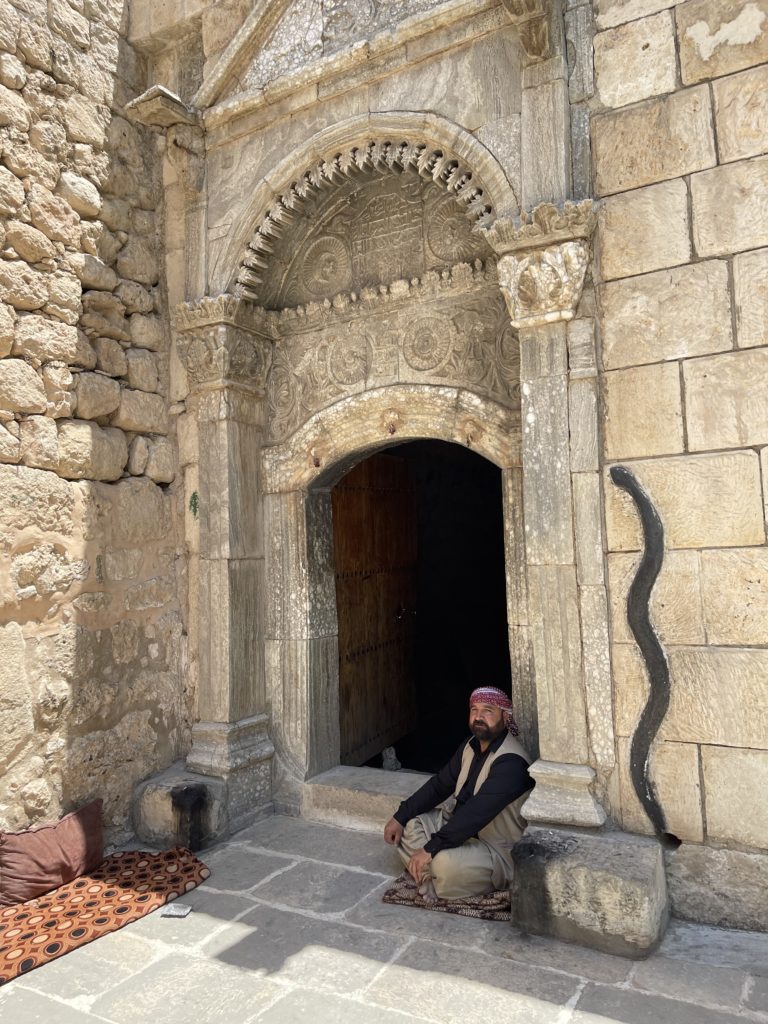
Outside that temple, I was invited for tea with some members of the faith. The men I had tea with where part of the family that maintains the temple.
Then, we went into the most holy temple in the Yazidi faith. There, I was invited to partake in a religious ritual where in a cave like room, you throw a towel onto a rock with your eye clothes from roughly 15 feet away. If the towel lands, you wish will come true. You are allowed 3 tries, and I got it on my first try.
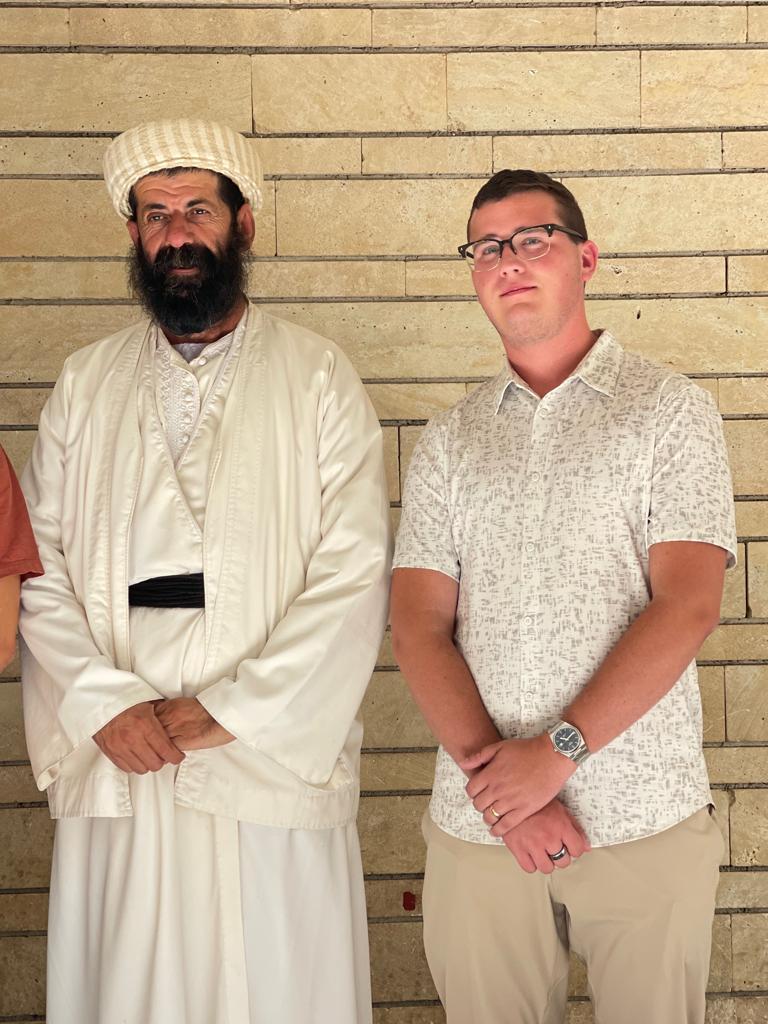
Then, I gave an offering and a string was lit while a man prayed for me.
After that, I met another religious leader in the Yazidi faith. He can only be described as their “pope”, being the only priest in the entire religion. Yazidi people are nature worshippers, and as such have no need for churches or religious leaders. Still, one is named for the entire faith to run things.
He invited us to lunch, but unfortunately there was still much to see that day and we had to decline.
We then left Lalish, put our shoes back on, and headed for Mar Mattai Monastery.
Mar Mattai Monastery (The Monastery of St. Matthew) is one of the oldest Christian monasteries in existence. Founded in 363 AD, it’s mountainous location and the security this provided may be the only reason it still stands today.
At its peak, it housed 70+ monks though currently only 6 reside there.
From the monastery, you also have a view of Mosul in the distance and the line where ISIS/Kurdish forces fought.

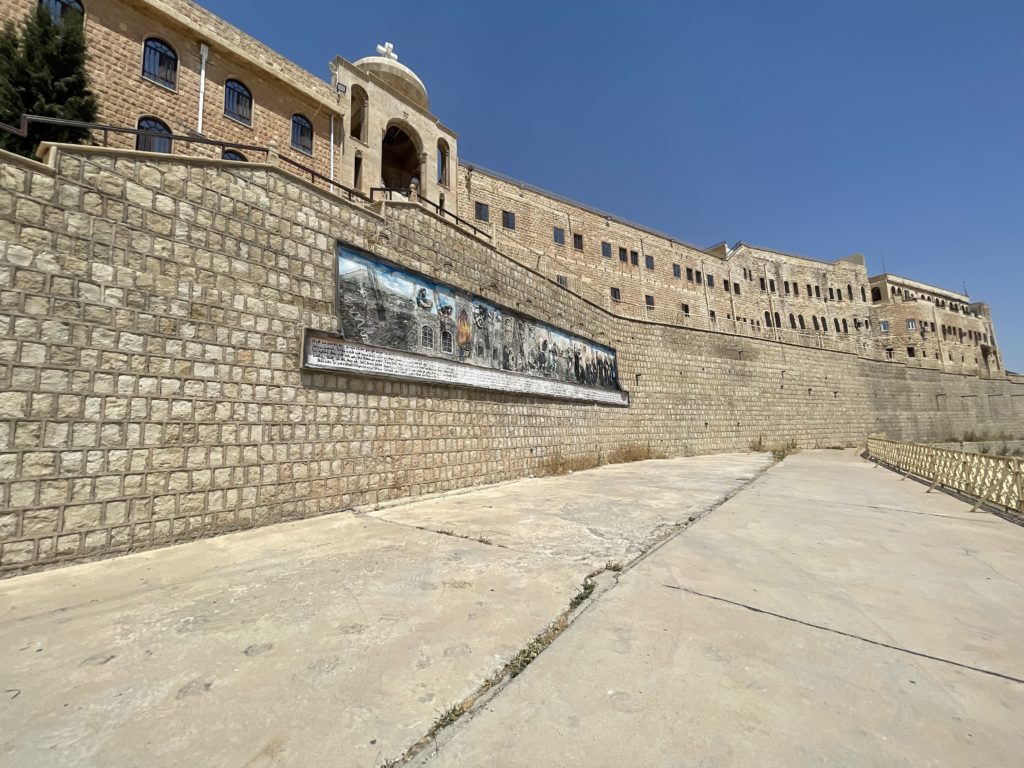

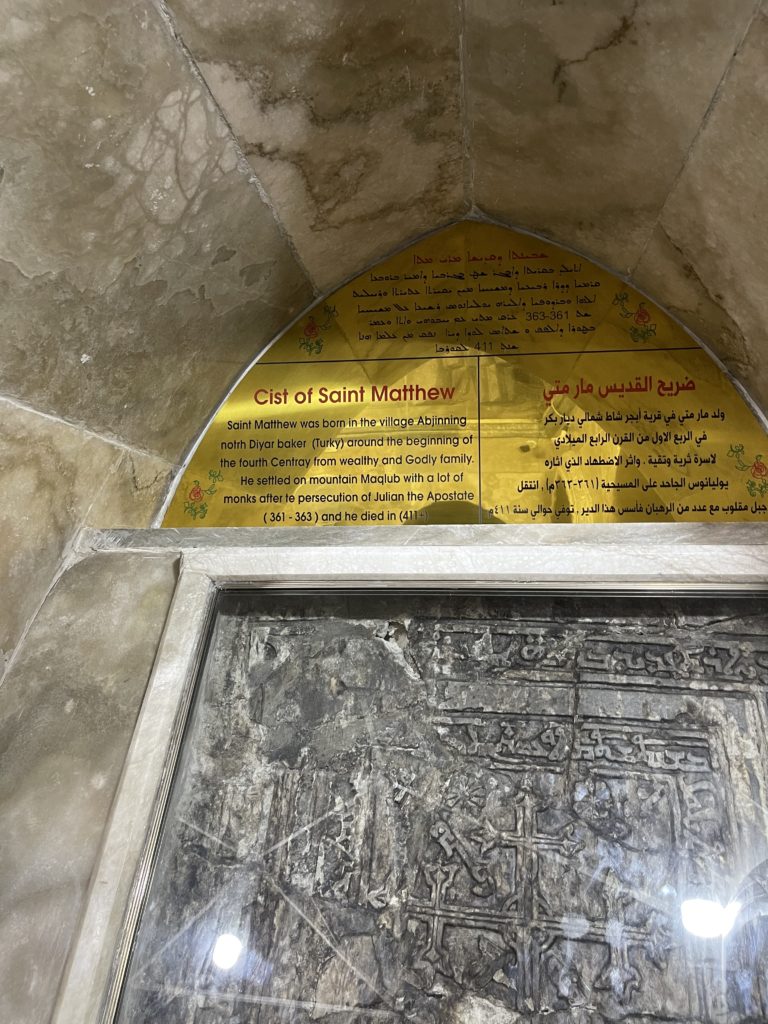
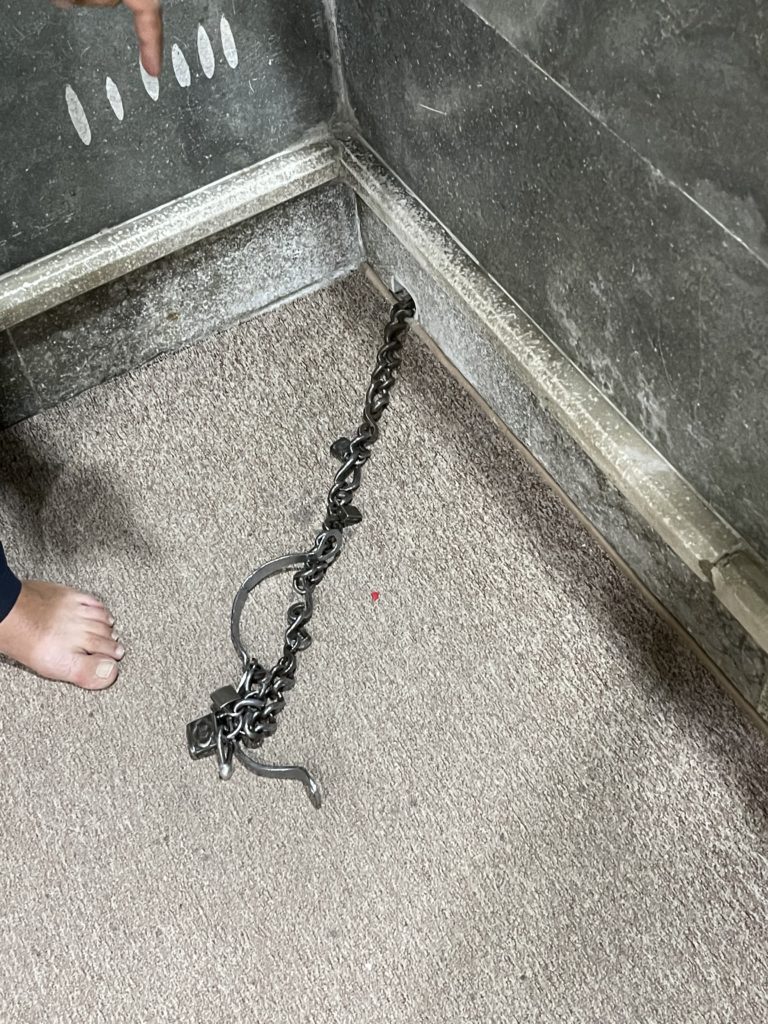

Lastly in Day 2, we headed to Akre Town. Akre Town is one of the oldest continuously inhabited towns in the world, having been built in the 7th century BC. You can see the foundations of houses that are thousands of years old in the mountains as you approach the town.
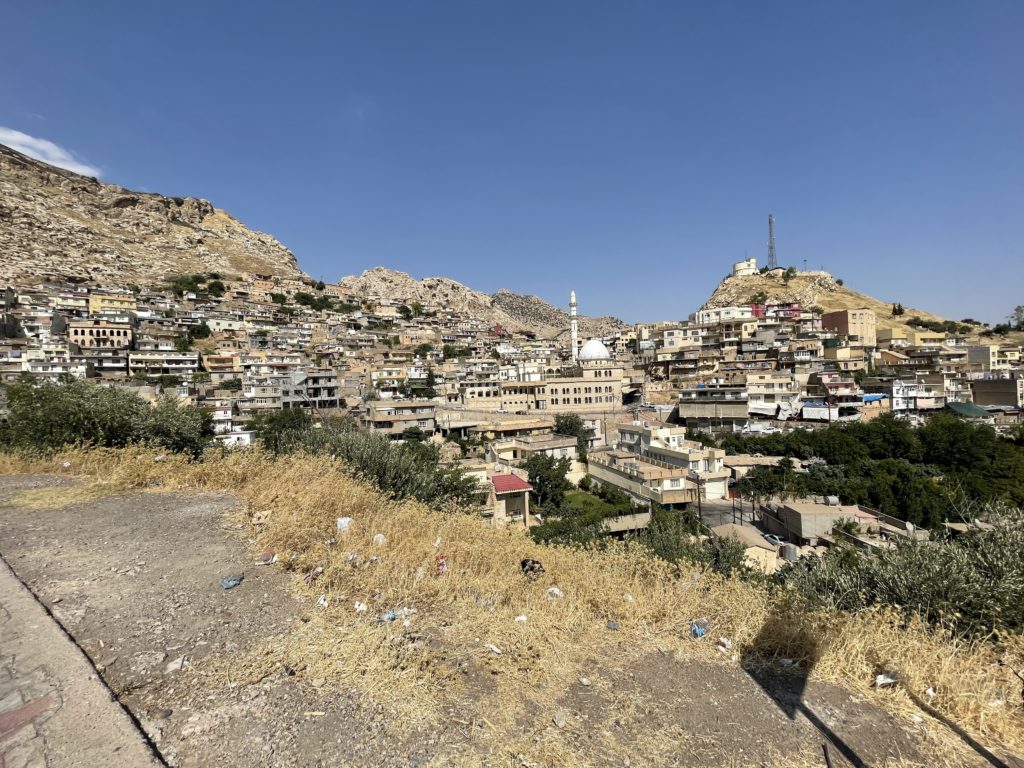
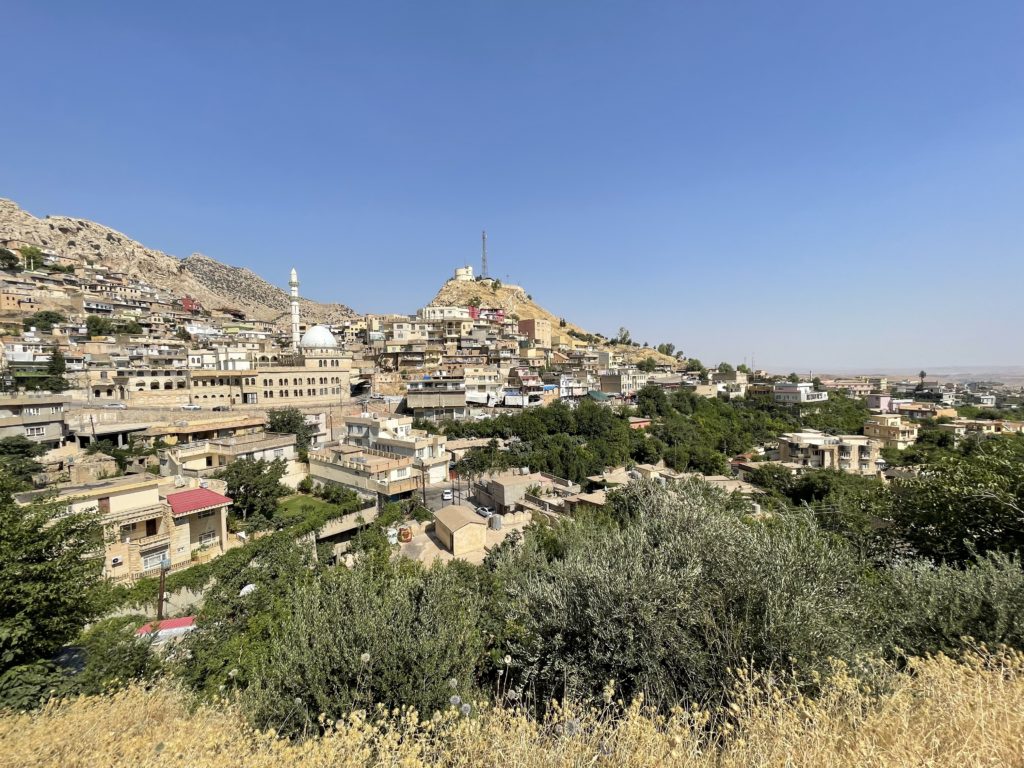

In Akre Town, we also visited the shrine of Sheikh Abdul Aziz Gailani.

Finally, I headed back to my hotel for the night.
Day 3
Day 3 was dedicated to Hamilton Road, and the markets in Erbil.
Hamilton Road, a masterpiece of engineering, is a winding path that extends through the rugged terrains of northeastern Iraq. Connecting the city of Erbil with the Iranian border at Haj Omran, this 180-kilometer stretch provides a breathtaking journey through some of the region’s most striking landscapes. Built in the 1920s during the British mandate of Iraq, Hamilton Road was named after its chief engineer, Archibald Milne Hamilton. The project was a feat of engineering for its time, as it traversed the steep mountainous areas of the region, including the spectacular Gali Ali Beg waterfall, providing vital connections between remote villages and the rest of the country.
The historic and scenic value of Hamilton Road has made it a sought-after destination for travelers and adventure enthusiasts alike. As you travel along this road, you will encounter an ever-changing panorama that ranges from lush valleys and dramatic cliffs to barren mountains and hidden springs. The road serves as a testament to human ingenuity and the harmonious blend of nature and engineering.


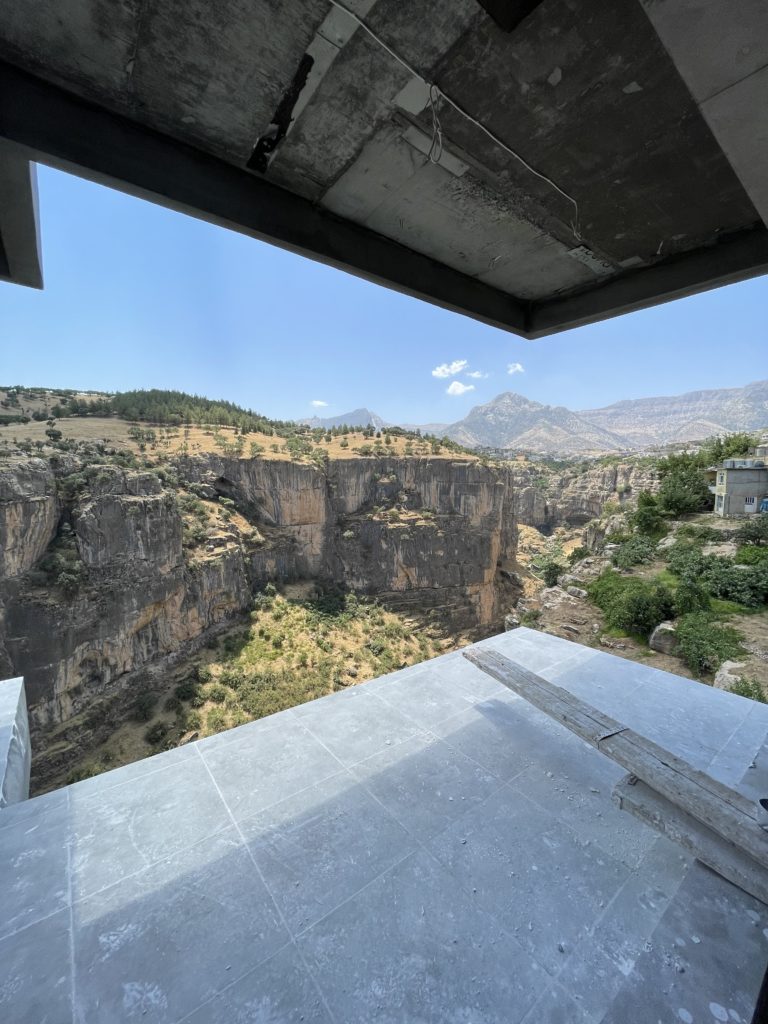
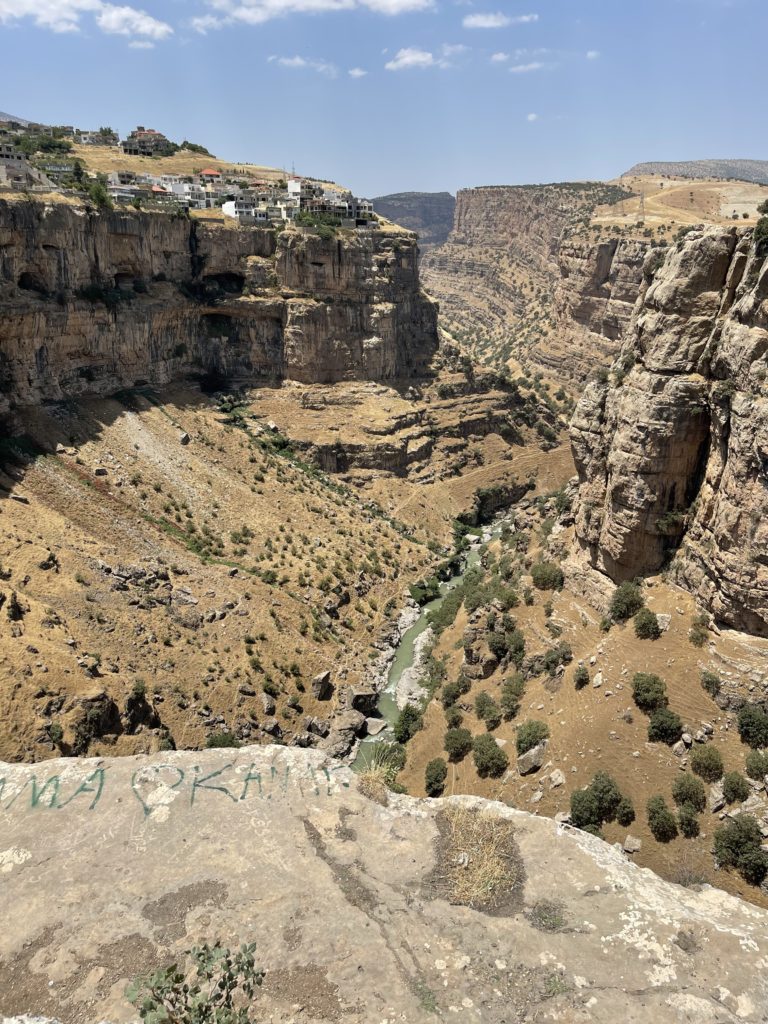
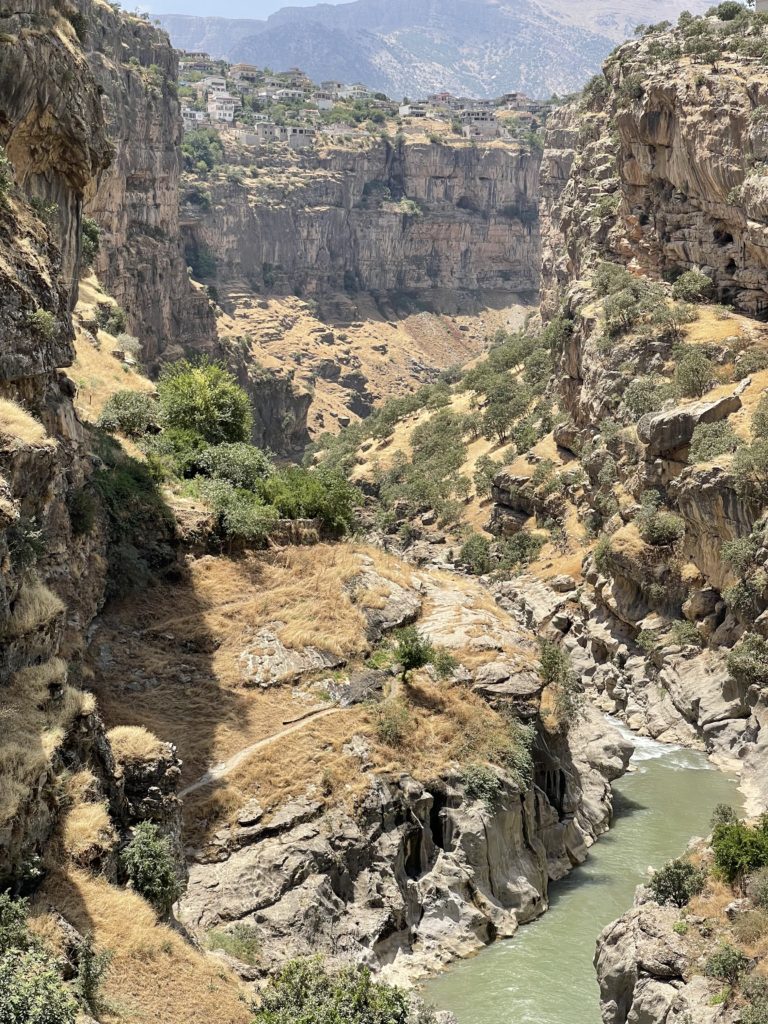
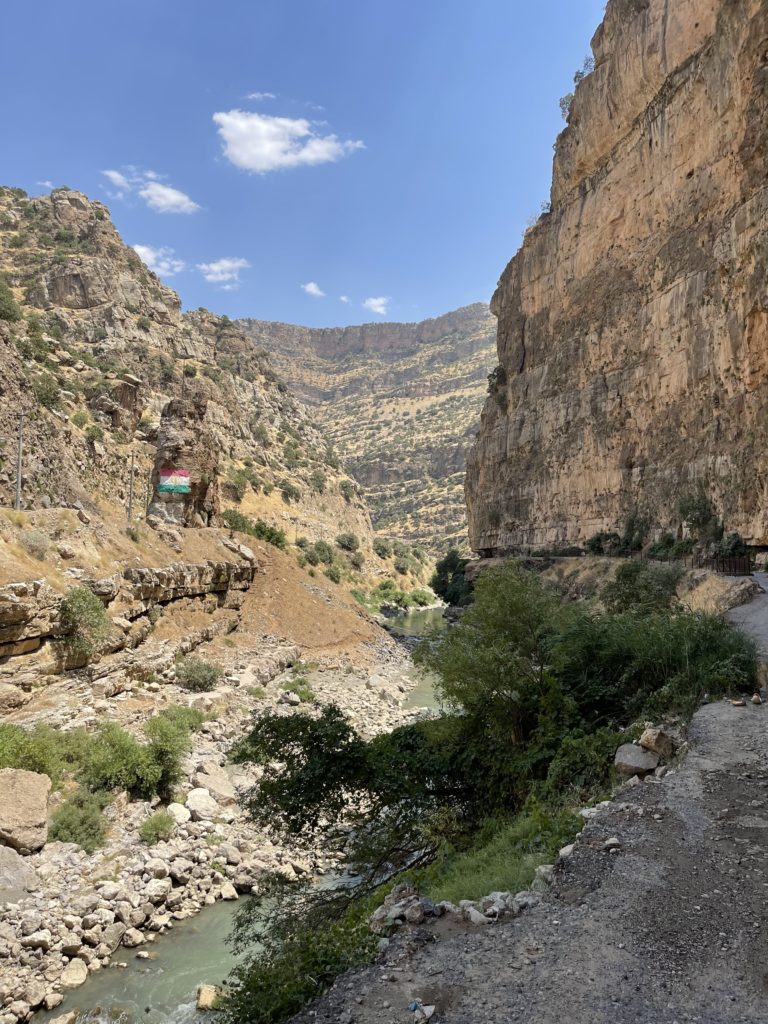
Back in Erbil, we headed to the Qaysari Bazaar. This sprawling market is not only a hub for commerce but also a living testament to the city’s rich history and cultural heritage. Wandering through the maze-like passageways of the bazaar, you’ll discover an astonishing array of goods, from traditional Kurdish textiles and intricate jewelry to spices, sweets, and handcrafted wares – there’s even a complete stock market/money market there. The echoes of haggling merchants, the mingling scents of tea and spices, and the visual feast of colorful displays create an enchanting atmosphere. Qaysari Bazaar is more than just a place to shop; it’s a microcosm of Erbil’s daily life, where tradition meets the contemporary, and where visitors can immerse themselves in the local culture.
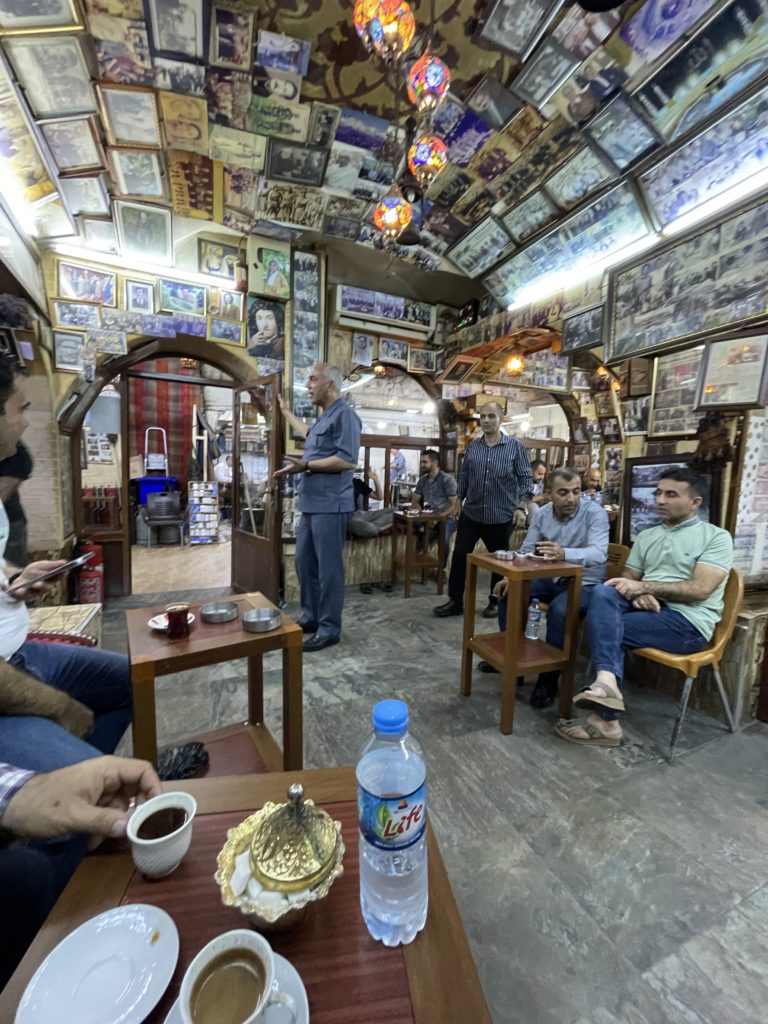
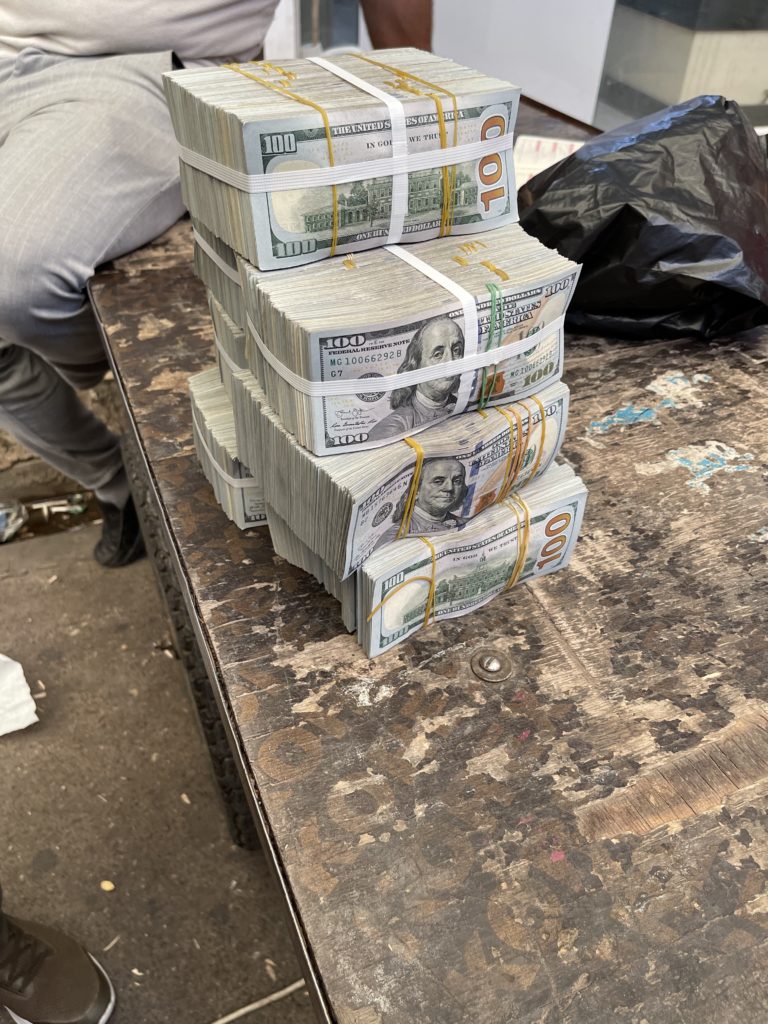
Lastly, I spent around an hour visiting a mosque and learning about Islam. Growing up in Ohio, there were so many aspects of the faith I didn’t understand and Haval answered and explained everything he possibly could.
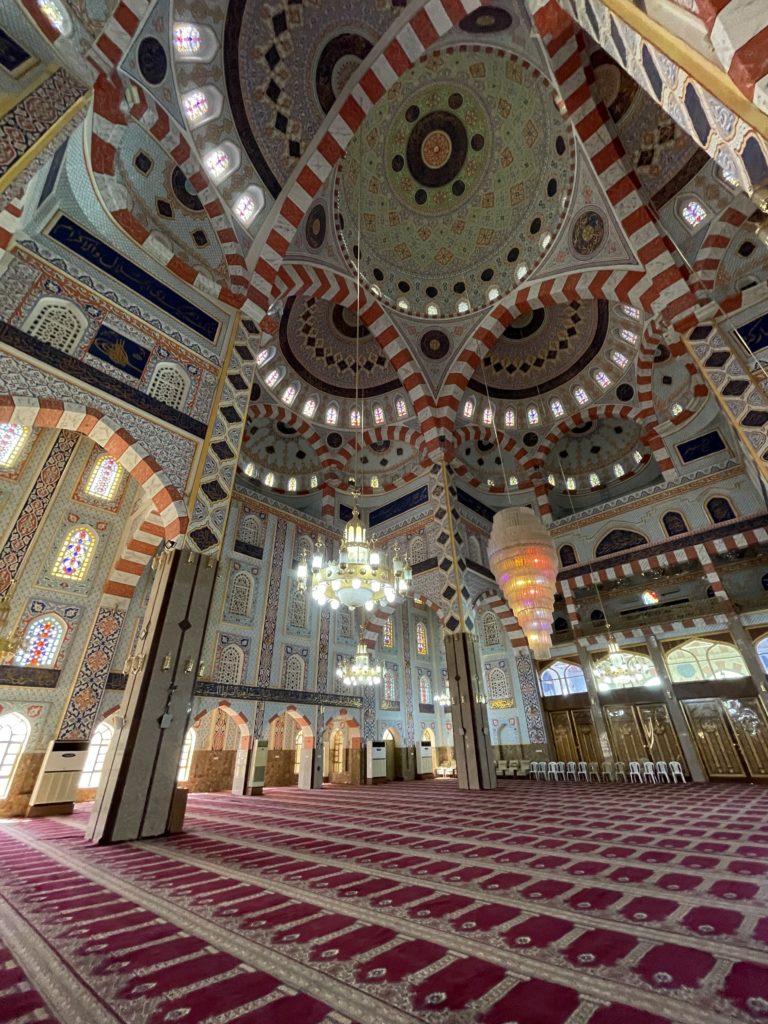
Overall, my visit to Iraq was one of my favorite places I’ve ever been. I highly encourage anyone with the means to go. It is truly an unforgettable place.

0 Comments